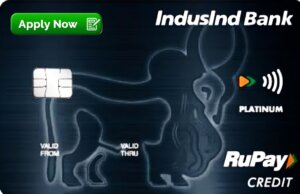In today’s world, credit cards are one of the most common financial tools used by consumers. They offer convenience, the ability to make large purchases, rewards programs, and the flexibility to pay over time. However, all these benefits come with a potential downside—interest. Understanding how credit card interest works is critical to managing your money wisely and avoiding long-term debt.
This article explores what credit card interest is, how it is calculated, why it matters, and what you can do to minimize or avoid it altogether.
1. What Is Credit Card Interest?
Credit card interest is essentially the fee you pay for borrowing money from a credit card issuer. When you make purchases with a credit card, you're not using your own money but rather borrowing funds from the card issuer. If you don’t pay back the full amount you’ve borrowed by the due date, the issuer will charge you interest on the unpaid balance.
Unlike traditional loans, where interest may be charged monthly or annually, credit card interest is usually calculated daily, which means it can accumulate quickly if you carry a balance from one billing cycle to the next.
2. Understanding APR (Annual Percentage Rate)
The interest charged on a credit card is expressed as the Annual Percentage Rate (APR). This number represents how much interest you will be charged over a year. However, credit card issuers typically calculate interest on a daily basis using what’s called the Daily Periodic Rate (DPR).
To calculate the DPR, the APR is divided by 365 days (or 366 in a leap year). For example, if your card has an APR of 18%, the daily rate would be:
This small daily rate adds up over time, especially if you carry a balance.
3. Types of APRs
It’s important to know that credit cards may have more than one APR, depending on how you use the card. Here are the common types:
a. Purchase APR
This is the interest rate applied to regular purchases.
b. Balance Transfer APR
This applies when you transfer a balance from one credit card to another.
c. Cash Advance APR
This is applied when you use your credit card to withdraw cash from an ATM or receive a cash equivalent. This APR is typically much higher than the purchase APR.
d. Penalty APR
This higher rate may be triggered if you miss a payment or violate the card’s terms. It can be as high as 29.99% or more and can last indefinitely.
Knowing the APR types and their conditions can help you use your credit card more strategically.
4. How Is Credit Card Interest Calculated?
Most credit card companies calculate interest using the average daily balance method. This involves a few steps:
Step 1: Convert APR to Daily Periodic Rate (DPR)
As explained, divide the APR by 365.
Step 2: Determine the Average Daily Balance
This is done by taking the balance on your account for each day of the billing period, adding them together, and dividing by the number of days.
Step 3: Multiply by DPR and the Number of Days
Finally, multiply the average daily balance by the daily rate and then by the number of days in the billing cycle.
Example:
Let’s say:
-
Your APR is 18%
-
Your average daily balance is $1,000
-
Your billing cycle is 30 days
This amount would be added to your next billing statement if you didn’t pay your full balance.
5. The Grace Period
A grace period is the time between the end of a billing cycle and the due date of your payment. During this period, if you pay your balance in full, you will not be charged any interest on your purchases.
However, if you carry a balance beyond the due date, you lose the grace period, and the card issuer will begin charging interest on your purchases from the date they were made.
Not all transactions qualify for a grace period—cash advances and balance transfers typically start accruing interest immediately.
6. Daily Compounding
Credit card interest is often compounded daily, which means that interest is added to your balance each day, and new interest is calculated based on the updated total. This method results in interest on interest, making the total cost of borrowing even higher over time.
For example, if your balance is $1,000 and you’re charged $1 in interest today, tomorrow’s interest is calculated on $1,001—not $1,000. This compounding effect can significantly increase your total repayment amount if you don’t regularly pay down your balance.
7. Minimum Payments and the Long-Term Cost
Every credit card statement includes a minimum payment, usually a small percentage of your total balance. While paying only the minimum keeps your account in good standing, it is not an effective strategy for reducing debt.
Consequences of Paying Only the Minimum:
-
Your debt takes a long time to repay.
-
You end up paying much more than you originally borrowed.
-
Your credit utilization ratio stays high, possibly hurting your credit score.
Let’s say you have a $2,000 balance with an 18% APR and make only the minimum payment of $40 per month. It could take over 6 years to pay off the balance, and you might pay more than $1,500 in interest.
8. Cash Advances: A Costly Option
Using your credit card to take out cash is called a cash advance. While it may seem like a convenient way to access funds, it often comes with high costs:
-
High APR: Often above 25%.
-
No grace period: Interest starts accruing immediately.
-
Additional fees: Usually 3–5% of the amount withdrawn.
Due to these factors, it’s advisable to use cash advances only in emergencies.
9. Introductory and Promotional Rates
Many credit cards offer introductory APRs, such as 0% interest on purchases or balance transfers for a certain number of months—usually between 6 and 18 months.
These offers can help you make large purchases or pay off existing debt without incurring interest during the promo period. However, it's critical to:
-
Pay off the balance before the intro period ends, or you’ll face regular APR.
-
Avoid late payments, as they may void the promotional rate.
-
Understand the terms carefully, especially for balance transfers.
10. Penalty APRs and Missed Payments
Failing to make a payment or exceeding your credit limit can trigger a penalty APR, which is a much higher interest rate applied to your existing and future balances.
This APR may remain in place for several months or even indefinitely. In addition to the higher interest, you may also incur:
-
Late fees
-
Damage to your credit score
-
Loss of rewards or promotional offers
To avoid penalty APRs, always pay at least the minimum payment on time.

11. How to Avoid or Reduce Interest
a. Pay Your Balance in Full
The most effective way to avoid interest is to pay off your entire statement balance each month.
b. Make Early Payments
You can reduce your average daily balance—and thus your interest—by making payments before your due date, or even mid-cycle.
c. Avoid Cash Advances
If you need cash, consider other options like a personal loan, which may have a lower interest rate.
d. Use Balance Transfers Wisely
Transferring high-interest debt to a 0% APR card can save money, but make sure to pay it off before the promotional period ends.
e. Set Payment Reminders
Automating payments or setting reminders can help ensure you never miss a due date.
12. The Impact of Credit Card Interest on Financial Health
Credit card interest, if not managed properly, can lead to serious financial consequences. Carrying high-interest debt can:
-
Limit your ability to save and invest
-
Reduce your credit score
-
Cause stress and anxiety
-
Lead to long-term financial instability
By understanding how interest works and taking steps to minimize it, you can use credit cards as a tool rather than a burden.
13. Credit Scores and Interest Rates
Your credit score affects the interest rate you’re offered. Those with higher scores are seen as lower risk by lenders and are more likely to receive lower APRs.
To qualify for better rates, maintain a good credit score by:
-
Paying bills on time
-
Keeping credit utilization low
-
Avoiding too many credit inquiries
-
Maintaining a long credit history
14. Legal Protections for Consumers
In the United States, the Credit CARD Act of 2009 introduced several protections for credit card users:
-
Card issuers must give 45 days’ notice before raising interest rates.
-
Interest rate increases cannot apply retroactively to existing balances (with some exceptions).
-
Monthly statements must include how long it will take to pay off a balance making only minimum payments.
These protections help consumers make more informed decisions about their credit use.

Conclusion
Understanding how credit card interest works is essential for anyone who uses a credit card. While credit cards can offer great benefits such as rewards, convenience, and improved credit scores, they can also become a costly liability if interest charges accumulate unchecked.
By learning how APR works, how interest is calculated, and how to avoid paying more than necessary, you can make smarter choices and keep your financial future secure. Pay your balances in full when possible, avoid unnecessary cash advances, and be cautious with promotional offers.
Credit cards are powerful financial tools—but only when used wisely.
Read More: -

.jpeg)







.jpeg)
